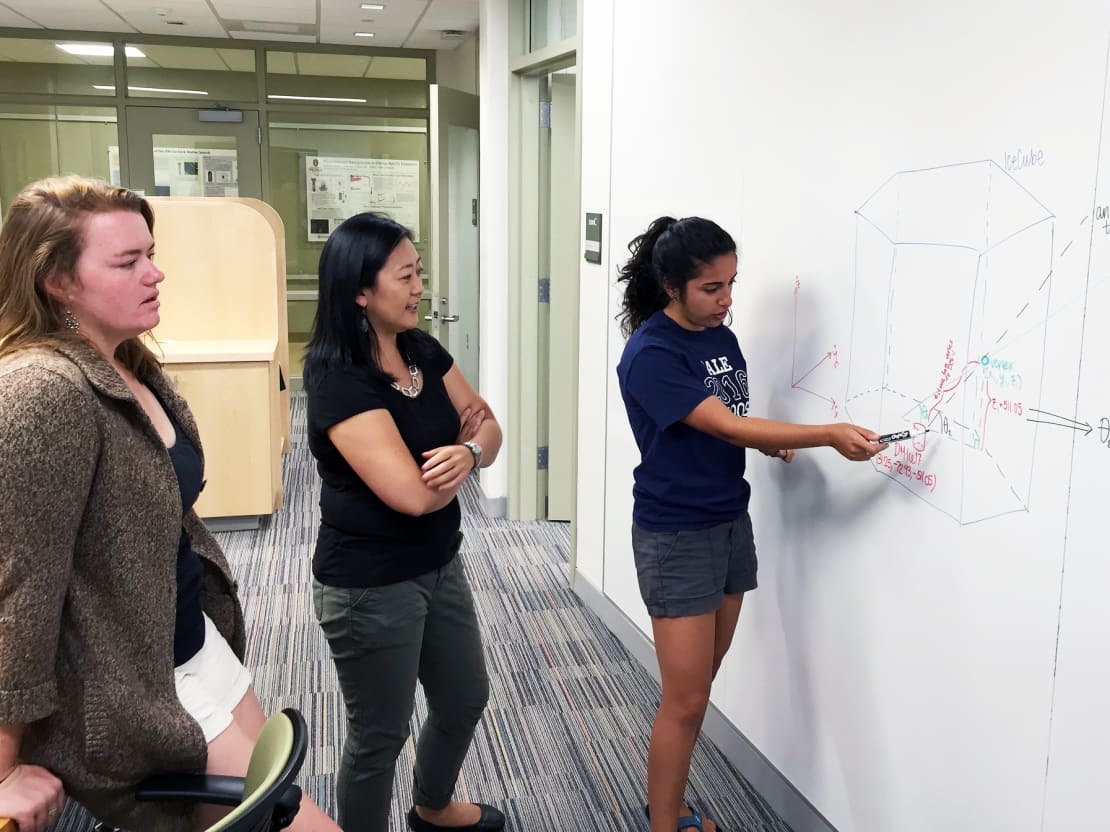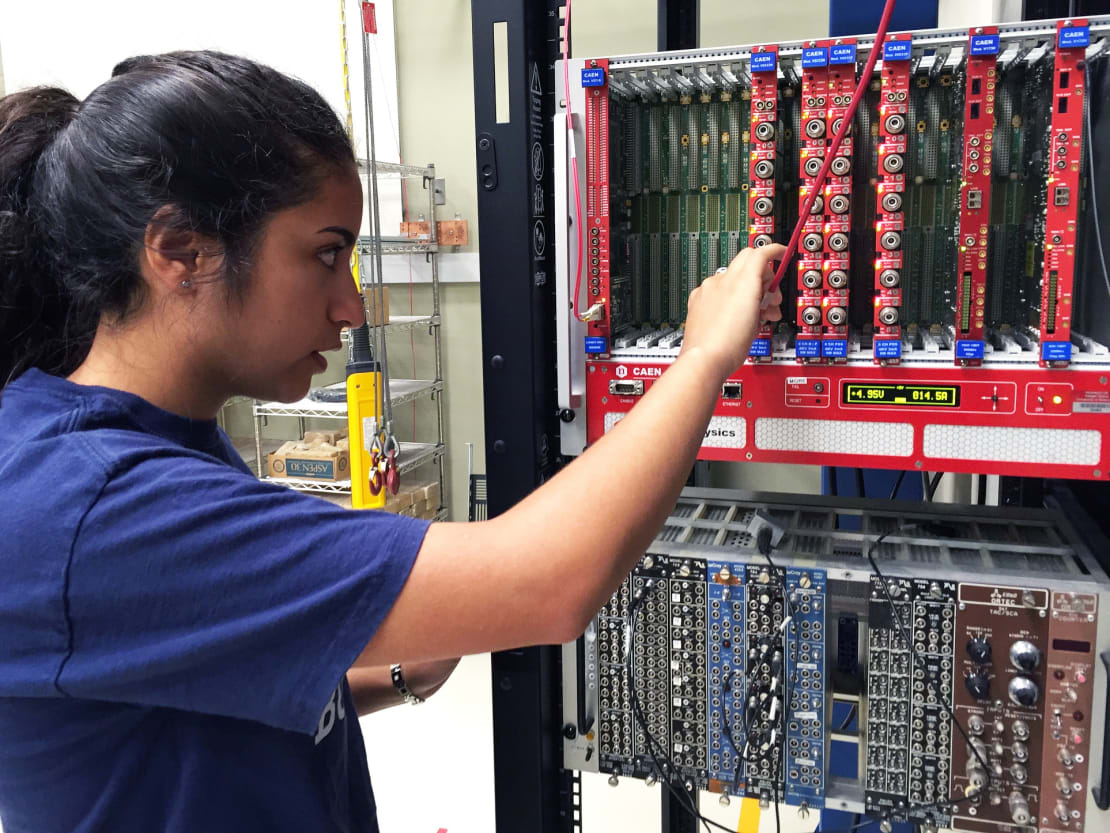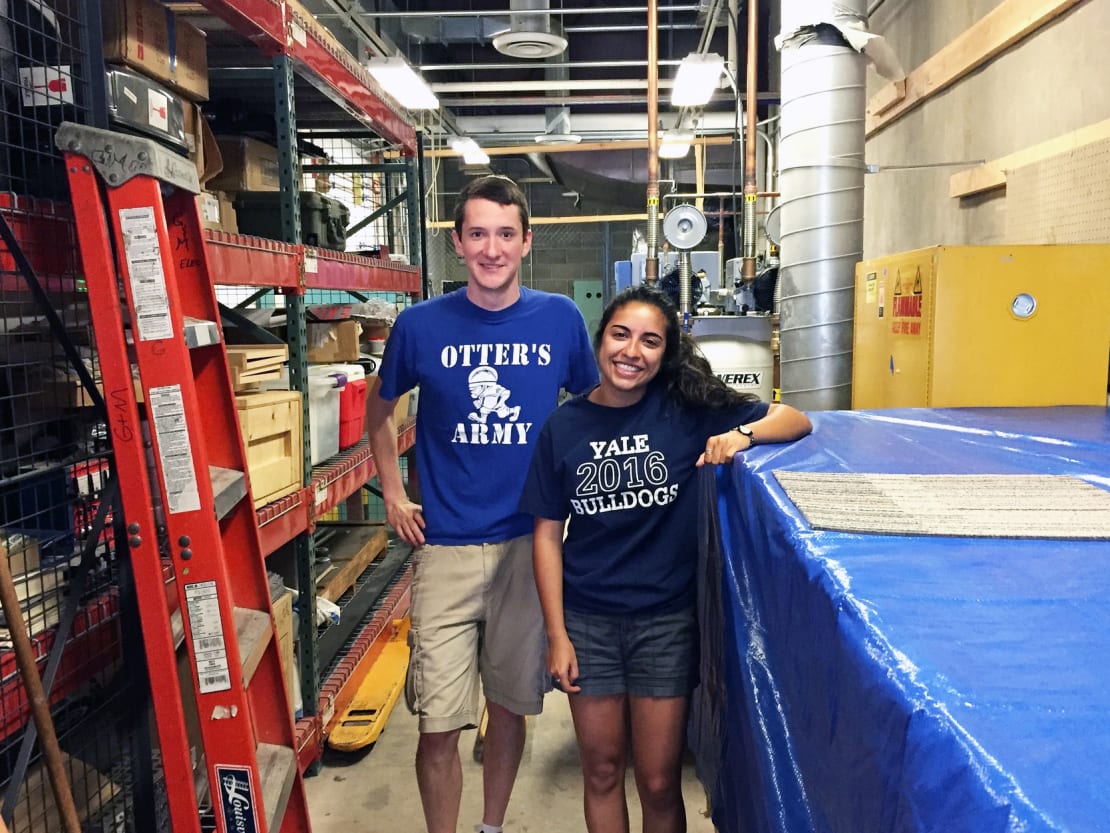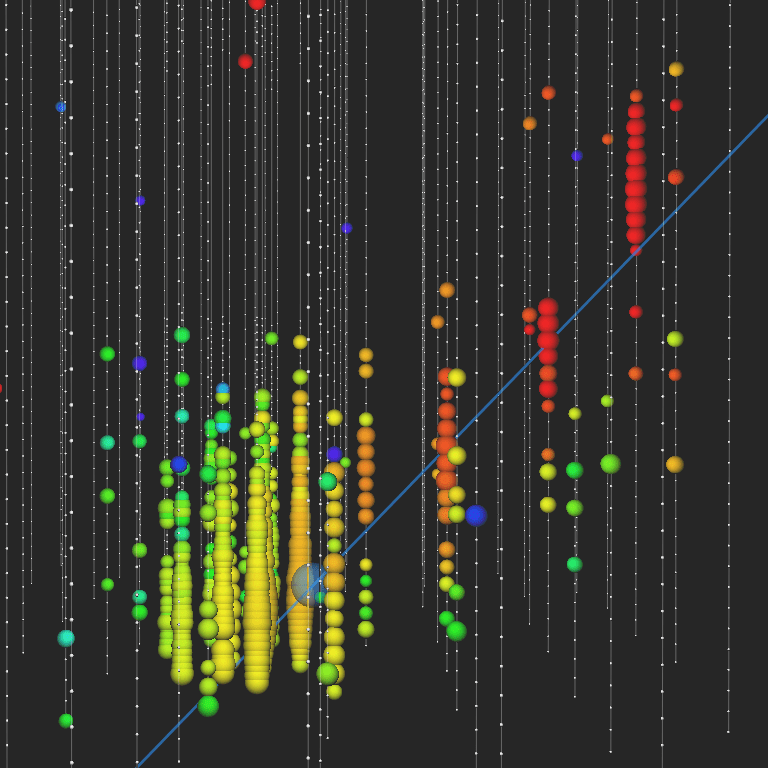When I came to Yale three years ago, I did not expect to major in physics. Yet, after taking my first class in the subject, it was not long before its fundamental nature and incredible universality had reeled me in for good. Since then, I have sought out opportunities to explore the field and learn what it really means to be a physicist. I joined Assistant Professor Reina Maruyama’s lab this past January and a few months later found myself working on DM-Ice and IceCube. Now, as I gear up for my final year of college, I am spending my summer on campus, conducting research on coincident muon events between the enormous IceCube (1 cubic km) and comparatively miniature (2,309 cubic cm) DM-Ice17 detectors.

The DM-Ice Collaboration is searching for dark matter, which is believed to comprise 27% of the universe and explain observed gravitational discrepancies. So far, only DAMA—a Northern Hemisphere sodium iodide (NaI(Tl)) experiment—has claimed to observe dark matter, reporting 14 years of an annual modulation believed to come from a galactic dark matter halo. This claim, however, has yet to be definitively confirmed or denied, and many critics have proposed other phenomena as alternative explanations. Muons, which modulate annually due to changes in atmospheric temperature, are one such proposal.

As the only direct detection experiment running in the Southern Hemisphere, where such seasonal changes are reversed, DM-Ice17 is in a unique position to definitively confirm or deny the DAMA signal. DM-Ice17 is the first of three generations of NaI(Tl) scintillators for direct dark matter detection in the DM-Ice experiment, and has been running since January of 2011. It is comprised of two identical detectors, each located within the volume of IceCube at a depth of 2,547 meters in the Antarctic ice. The first detector lies directly below DeepCore, IceCube’s denser inner subdetector, while the other is located on the edge of the IceCube volume.
To properly test the results of DAMA, modulating backgrounds like muons are of crucial importance to DM-Ice17. This is where IceCube comes in. DM-Ice17 uses IceCube to validate its internal muon identification, and thus becomes the only NaI(Tl) experiment with directional muon information; in a sense, IceCube acts as the world’s largest muon veto. However, while IceCube’s helpful impact on DM-Ice17 has been established, I am exploring the reverse—how coincidence with DM-Ice17 can improve IceCube analysis. In theory, IceCube can use DM-Ice17 to validate its reconstruction resolution, as both detectors provide set spaces through which all muons certainly traveled. Thus, my goal this summer has been to utilize DM-Ice17’s two locations to improve IceCube’s reconstructions of coincident muon events.

I began my study with a general qualitative analysis, viewing various muon events in Steamshovel, IceCube’s event viewing software, and noting how the reconstructions differed when given DM-Ice17’s location as a seed, as opposed to IceCube’s conventional seeding. I saw that the DM-Ice17-seeded reconstructions fit the event data more accurately in most cases, but I also identified instances for which this improvement alone was not sufficient to yield a reconstruction consistent with the known path through DM-Ice17.
My next task was to adjust the reconstruction algorithm itself. Since the events I was concerned with all passed through DM-Ice17, an ideal reconstruction would have stayed as close to DM-Ice17 as possible without sacrificing accuracy in the zenith and azimuth angles. To achieve this, I added a penalty to the likelihood calculation that was inversely related to each candidate path’s distance of closest approach to DM-Ice17. This way, paths that remained close to DM-Ice17 would be generally more likely, but there was room to consider other factors. The penalty also included a weighting factor, which could be set as high or low as desired.
My preliminary observations suggested that applying the penalty did move paths closer to DM-Ice17, but that increasing the weighting factor produced negligible changes beyond that of the inverse distance penalty. To further develop this concept, I am running these reconstructions on simulations, where a full understanding of the muon path is available. So far, I have simulated 100,000 muons—all aimed at DM-Ice17 such that each event is coincident—with known zenith and azimuth angles. I am applying four reconstructions to each event: one conventional IceCube fit, one unpenalized fit with DM-Ice17 as its seed, one penalized fit with the same seeding, and one in which the path is fixed at DM-Ice17. Together these are a combination of established reconstructions and original development by myself and other collaboration members. I will use my results to determine which of the four methods reconstructs coincident muon paths most accurately.

Through this research experience, my programming and general computational skills have certainly improved, but I have also learned a lot about what it means to be part of a collaborative experiment. The DM-Ice17 team is an order of magnitude smaller than IceCube, which has enabled me to learn something from everyone’s research even as I focus on my own. Collaborating with IceCube has been similarly rewarding, albeit on a larger scale. Whether at boot camp with others at the Wisconsin IceCube Particle Astrophysics Center or back at Yale, it has been both exciting and helpful to be part of a group where I am building on the expertise and previous work of more experienced scientists.
This summer has affirmed my desire to continue with research after I graduate from Yale next May, and I have enjoyed focusing on individual goals within a much broader overall experiment. By the end of the summer, my work will hopefully have improved the reconstruction resolution of coincident events, providing IceCube and DM-Ice17 alike with better directional information on such muons. And, as IceCube moves forward with development of scintillators for their planned experiment PINGU, the ability to exploit event coincidence will only become more valuable in future work.